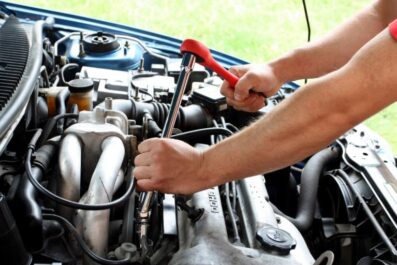Understanding a Powertrain Warranty for Your Car: A Full Guide

Buying a car is a significant investment, and to protect that investment, manufacturers offer various types of warranties. One of the most crucial warranties that often comes with a new or certified pre-owned car is the powertrain warranty.
But what exactly is a powertrain warranty, and what does it cover? Understanding the scope and limitations of a powertrain warranty can save you from unexpected repair costs and give you peace of mind on the road.
In this guide, we’ll dive into everything you need to know about powertrain warranties, from what they cover to what they exclude, and how to make the most of this valuable protection.
What is a Powertrain Warranty?
A powertrain warranty is a type of coverage that specifically focuses on the essential components that make your car move: the powertrain. The powertrain comprises three main elements: the engine, the transmission, and the drivetrain. Since these parts are vital to your vehicle’s operation and also among the most expensive to repair, a powertrain warranty protects you financially if you experience problems within the warranty period.
Powertrain warranties are usually offered for an extended period compared to basic or bumper-to-bumper warranties, often lasting five years or more and covering a set number of miles. For instance, Jeep Powertrain Warranty offers extensive coverage on new vehicles, protecting the engine, transmission, and drivetrain components for up to 5 years or 60,000 miles.
This extended coverage period is meant to give car owners peace of mind, knowing that major repairs related to the powertrain will be covered even after the initial warranty expires.
Components Covered Under a Powertrain Warranty
The powertrain warranty covers key components responsible for propelling the vehicle forward. Here’s a closer look at what’s typically included:
Engine
The engine is the heart of the vehicle, and a powertrain warranty usually covers components such as the engine block, cylinder head, oil pan, pistons, timing belt, water pump, fuel pump, and intake manifold. However, certain consumables and parts that wear out over time, like filters and spark plugs, may not be included.
Transmission
A car’s transmission allows you to control the engine’s power and adjust speed and direction. Whether your car has an automatic or manual transmission, a powertrain warranty typically covers components like the transmission case, torque converter, and various internal parts. Some warranties may also include the clutch, although this can vary by manufacturer.
Drivetrain
The drivetrain transmits the engine’s power to the wheels, making the car move. Components such as the driveshaft, axles, differential, and transfer case are generally covered under a powertrain warranty. This coverage is especially beneficial for drivers of all-wheel-drive (AWD) and four-wheel-drive (4WD) vehicles, as these systems have more complex drivetrain parts.
What’s Not Covered by a Powertrain Warranty?
While a powertrain warranty covers the essential parts of your vehicle, there are some notable exclusions. Here are typical items not covered under a powertrain warranty:
Regular Maintenance and Wear Items
Components that naturally wear out over time, such as brake pads, tires, belts, and hoses, are not covered. These are considered routine maintenance items, and it’s the owner’s responsibility to replace them as needed.
Body and Interior
A powertrain warranty does not cover cosmetic issues like paint or bodywork, nor does it cover interior components like seats, electronics, and entertainment systems. If you’re concerned about these parts, you may want to consider a bumper-to-bumper warranty or extended warranty.
Damage Due to Neglect or Misuse
If a car owner fails to maintain their vehicle or uses it in ways beyond its intended purpose, like off-roading in a non-4WD vehicle, the warranty provider may deny coverage. Always follow your car’s maintenance schedule and guidelines to ensure you stay within the terms of the warranty.
How to Use Your Powertrain Warranty?
If you experience an issue covered by the powertrain warranty, here’s how to make a claim:
- Take Your Car to an Authorized Dealer: Most manufacturers require you to bring your vehicle to an authorized dealership for warranty repairs. The dealership will inspect your car and determine if the problem is covered under the warranty.
- Provide Maintenance Records: To ensure your warranty claim goes smoothly, keep records of regular maintenance. Dealers may request documentation to confirm you’ve followed the recommended service schedule.
- Be Aware of Deductibles: Some powertrain warranties may have deductibles, especially with extended warranties. Verify your warranty details so you’re prepared for any out-of-pocket expenses.
Powertrain Warranty Length and Terms
Powertrain warranties generally last longer than standard warranties, with coverage ranging from five to 10 years or from 60,000 to 100,000 miles, depending on the manufacturer. Knowing these terms can help you understand when the coverage period ends, allowing you to plan for maintenance costs once the warranty expires.
Pros and Cons of a Powertrain Warranty
Pros
- Covers the most expensive repairs, such as engine and transmission issues.
- Provides peace of mind for several years beyond the standard warranty period.
- Saves owner’s money on major repairs, helping to retain the vehicle’s resale value.
Cons
- Does not cover routine maintenance, bodywork, or interior components.
- Limited to specific parts and conditions, with exclusions based on misuse or neglect.
- Deductibles may apply, especially for extended warranties.
Conclusion
A powertrain warranty is an essential part of vehicle ownership, protecting the parts that make your car run smoothly and efficiently. It provides peace of mind against unexpected repair costs, especially for expensive components like the engine, transmission, and drivetrain.
Understanding the scope of your powertrain warranty—what it covers, what it doesn’t, and how to make a claim—can help you maximize this coverage and make more informed decisions about car care. Remember, regular maintenance and responsible use are key to getting the most out of any warranty, and staying within the guidelines ensures your car is always ready for the road.





